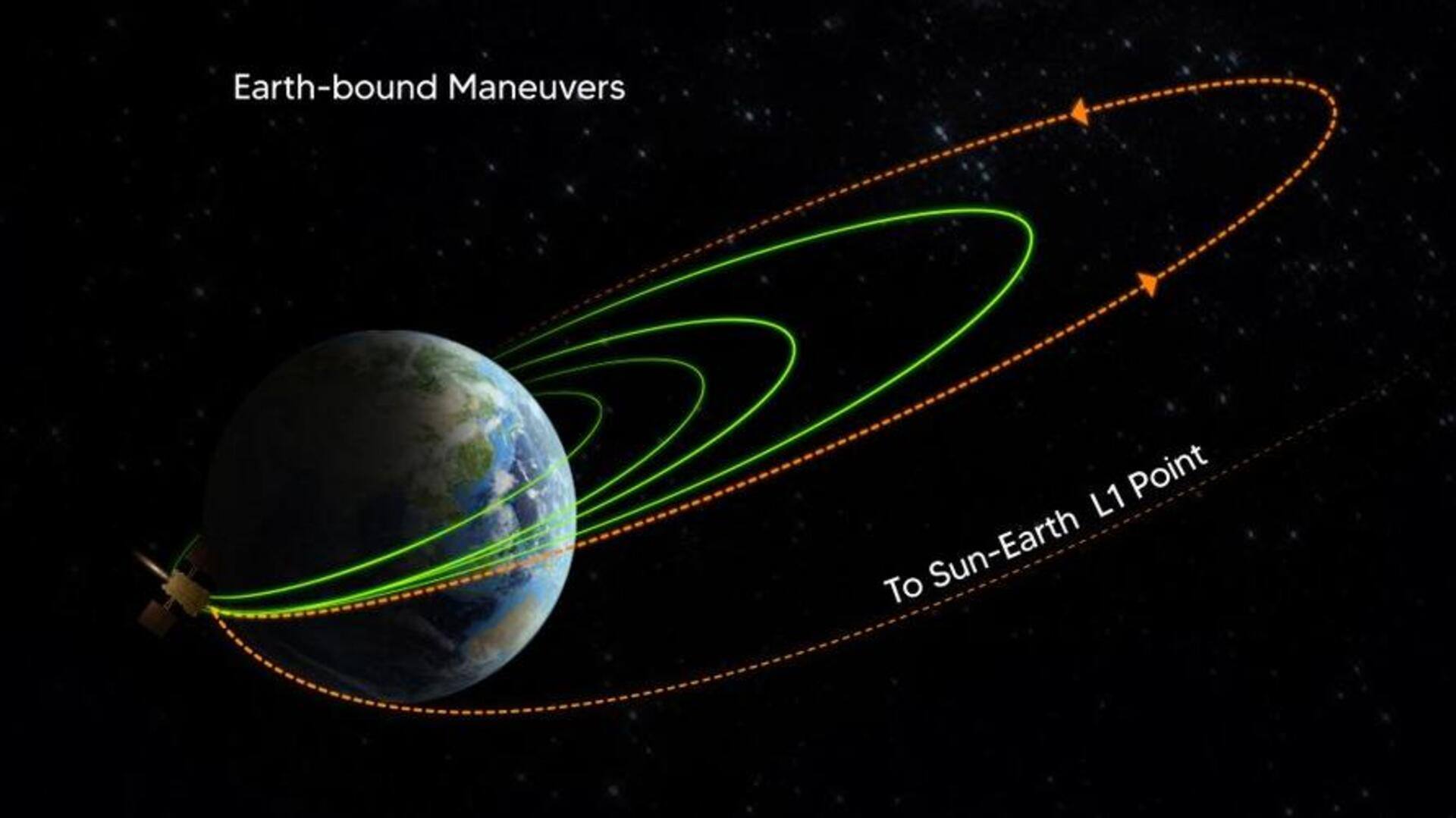
ISRO's Aditya-L1 to undergo key maneuver on September 19
What's the story
India's first space-based solar mission, Aditya-L1, has successfully completed its fourth Earth-bound maneuver. The said operation was executed earlier today and the Indian Space Research Organisation (ISRO) confirmed that the spacecraft has attained a new orbit of 256km x 1,21,973km. The next operation is planned for September 19. Among the core goals of the mission is to provide real-time insights into solar activities and their effects on space weather.
Details
Journey to the Sun-Earth Lagrangian point
Aditya-L1 is designed to study the Sun from a halo orbit around the first Sun-Earth Lagrangian point (L1), approximately 1.5 million kilometers from Earth. The L1 point represents a gravitationally stable position where the gravitational forces of the Sun and Earth balance each other. From this unique position, the spacecraft will remain in a fixed position relative to the Sun, allowing it to continuously monitor the giant star without the Earth ever eclipsing its view.
Maneuvers
The mission will take 4 months to reach its destination
The mission, which launched on September 2, will undergo a total of five orbit-raising maneuvers till it gains the necessary velocity, after which it will be slingshotted to reach its target L1 destination. It is estimated to take four months for the spacecraft to get there. The first three Earth-bound maneuvers were carried out on September 3, 5, and 10. The mission's next maneuver, called the Trans-Lagrangean Point 1 Insertion (TL1I), is scheduled for September 19, around 2:00am IST.
Payloads
All of Aditya-L1's payloads are indigenously developed
Aditya-L1's objectives include observing the Sun's corona (outermost layer), photosphere (visible surface of the Sun), and chromosphere (middle layer). It is expected to shed light on coronal heating, Coronal Mass Ejections (CMEs), solar flares, and near-Earth space weather, among others. The mission is equipped with seven payloads, all of which have been indigenously developed. About a week ago, the spacecraft sent back a selfie to Earth, capturing our home planet and the Moon in one frame.
Twitter Post
Take a look at ISRO's official post
Aditya-L1 Mission:
— ISRO (@isro) September 14, 2023
The fourth Earth-bound maneuvre (EBN#4) is performed successfully.
ISRO's ground stations at Mauritius, Bengaluru, SDSC-SHAR and Port Blair tracked the satellite during this operation, while a transportable terminal currently stationed in the Fiji islands for… pic.twitter.com/cPfsF5GIk5